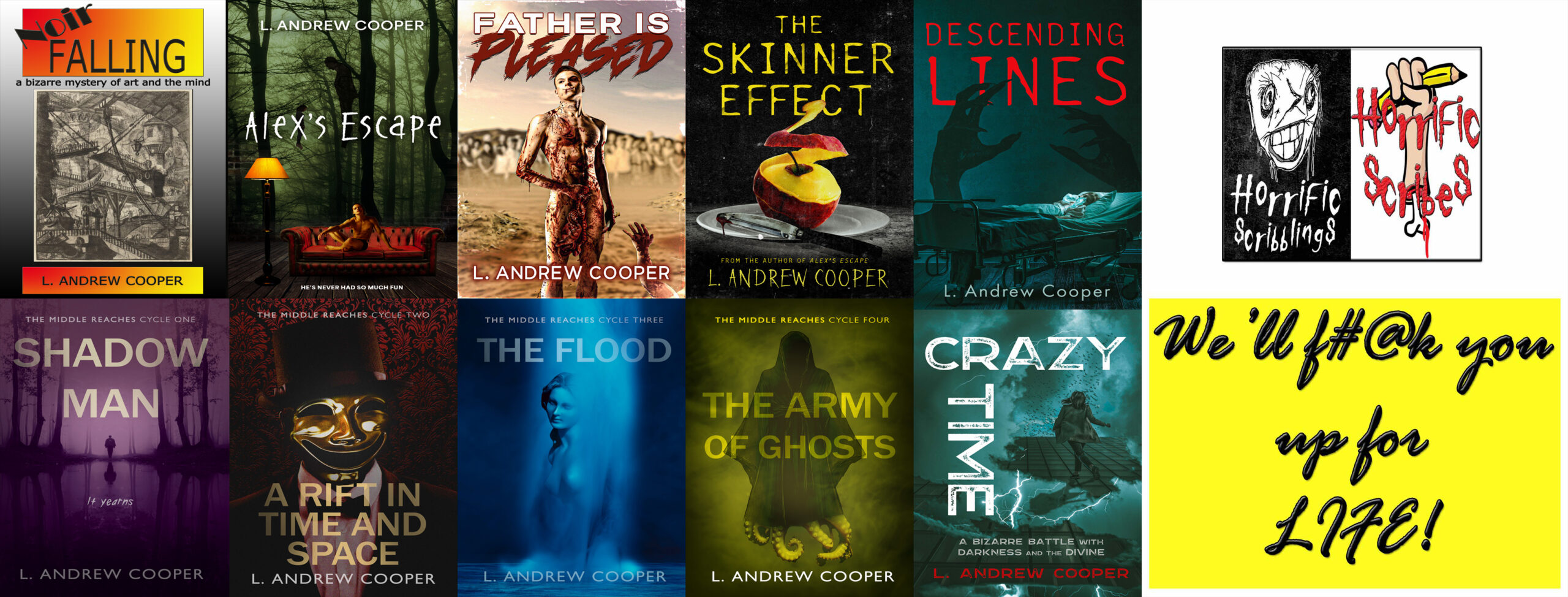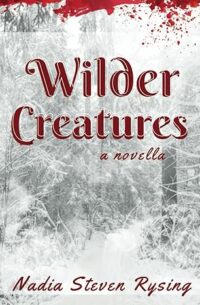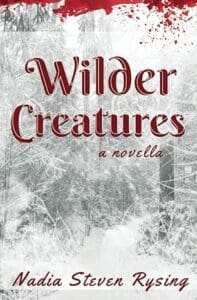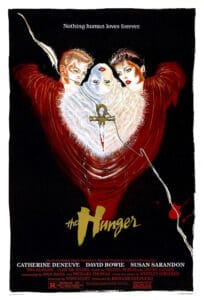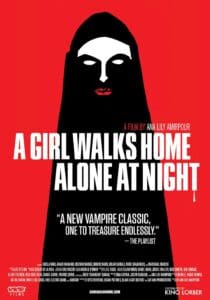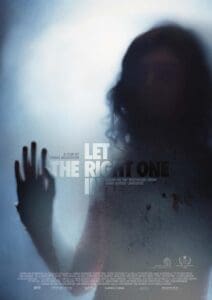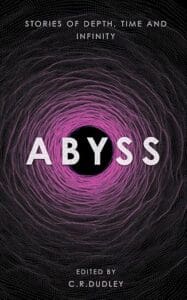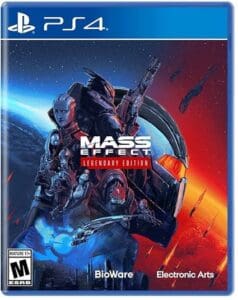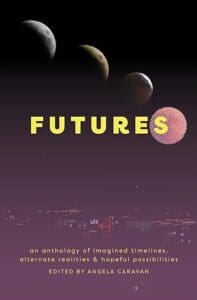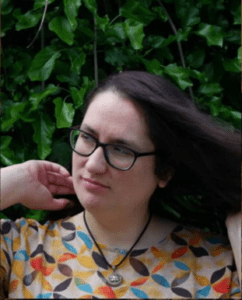Author Nadia Steven Rysing puts her dark imaginative skills on display as we discuss the layered characters, elaborate worldbuilding, and fascinating creatures in her debut novella Wilder Creatures.
Wilder Creatures
Ruth McGowan’s estranged brother has been killed. But not just killed—torn apart.
And David’s not the only one. Shredded corpses are piling up in Grey County faster than the falling snow. Authorities say it’s a black bear, though Ruth—called home from Toronto to ID the body and face her broken family—fears the answer is much more complicated.
While there may have been no love lost between Ruth and her brother, she refuses to let the evil claim any more of the ones she holds dear—not her beloved little sisters; not Ellie, the ex-girlfriend she still carries a torch for; not even Cora, the poodle she inherited along with the rest of the farm. So, when a mysterious new ally shows up one cold night to offer help, Ruth agrees—against her better judgment.
But with so much responsibility to juggle, Ruth forgets to protect herself, and the bloody consequences are worse—and wilder—than she could ever have imagined.
The Interview
1. Creating Creatures. What attracted you to the creature feature side of horror, and what inspired your creature? How did you choose the images that would define the creature’s closeness and potentially frightening distance from humanity? At least to a point, every creature designer is a Dr. Frankenstein: where did you get your creature’s parts, and how was the experience of creation? I hope I’m not being too much of a spoiler by saying that your creature, though atypical, falls into the sexy blood-drinker category, and Wilder Creatures partakes of the romance of the monstrous à la Anne Rice. What made you go all dark and sexy? What’s so attractive (to you and to readers) about the fantasy that blood-drinking could be better than sex?
NSR: The true spark for the Werros came from dancing with a friend in a bar many years ago. Under the cheap lighting, there was a moment where her blue eyes appeared violet without irises. That image has always remained an anchor point, and the rest of the creature developed in the writing process—essentially, adding on traits that allowed for new twists and turns in the plot. Those traits came from a deep love of monsters, cryptids, and the uncanny. I definitely enjoy Anne Rice, but I find myself drawing more on vampiric films like The Hunger (1983), A Girl Walks Home Alone at Night (2014), or even Let the Right One In (2008). For me it is less the blood drinking that’s hot than the idea of lonely humans getting entangled with equally lonely immortal creatures who could easily destroy them.
2. Queer Eyes. Speaking of sexy blood-drinkers, such characters in literature stood in for sexual deviants and sexual deviancy more than a century and a half before Anne Rice had a male couple metaphorically conceive and try to raise a daughter in Interview with the Vampire (1976). Your novella presents queer perspectives not only through the protagonist, who doesn’t use the L word but is a woman sexually oriented toward women, but also through the creatures, who defy heteronormativity in almost every conceivable way. Do you agree that you’re carrying on a queer tradition in horror? If so, how would you describe your vision of queerness, and what does it add to the tradition? If not, why not? One issue for queer-identified people (also relevant to race) that I think your work takes on is passing, the practice of people in an oppressed minority actively or passively encouraging people in the majority to perceive them as part of the majority. Your creatures’ ability to pass varies in relation to their frequency of blood-drinking. What do you think this tidbit suggests about passing in general?
NSR: I think horror by its very nature is queer because it is a tradition based in subversion. It is a genre that takes away all the guiderails and forces you to drive switchback highways alone in the dark. That space allows for all sorts of possibilities that might not be available to you in any other kind of fiction. If you’re going back to the classics of blood-sucking monsters, you’re immediately running into ladies being seduced by dark temptresses such as Carmilla or Geraldine. And those are just surface level reads, never mind looking at Dracula in the context of Bram Stoker’s own life. While my horror tends to be explicitly queer, even seemingly heterosexual fiction in this genre is by convention quite subversive when it comes to gender and sexuality. So yes, I am part of that literary tradition, but I don’t think of it as a niche of the genre but one of the primary lenses through which to view it.
I have to admit, I was blown away by your insight on passing. It was never a conscious intention on my part to provide commentary on what it means to be able to slip in and out of mainstream culture. I myself have complicated feelings about making my presence known in certain spaces, a constant balance of wondering if I need to share a part of my identity in order to explain my existence or to keep it tucked away as I am “close enough” to the norm that I can almost fit in. Either way takes up a great deal of energy, and maybe that’s where my mind was when I associated it with blood-drinking. Without that intake, you don’t have the choice to keep the mask on or not.
3. Wilder Gender. Closely related to queerness with regard to sexuality is queerness with regard to gender, and though your creatures have femaleness and maleness, they don’t follow human gender conventions. Avoiding anything you’d consider to be a spoiler, how and why do you make gender an aspect of your creatures’ wildness? Their pronouns fluctuate. An individual is often “it” but sometimes “she.” Characters are self-aware about the pronoun confusion. Why did you make such confusion part of the story? Ruth seems to perceive the primary creature she knows as “she” when she feels close to the creature and “it” when she perceives the creature as less human and more morally suspect. What is the relationship between gender and humanity? Gender and morality?
NSR: I think it is more of a relationship between gender and convention—Ruth is two steps away from understanding herself as a non-binary woman, and I think people about to make that big a discovery about themselves tend to push hard against it. Her experience with the creatures is a direct blow in breaking down that wall, and the process of self-discovery is by its nature quite bewildering. If we had met Ruth a few years later in life, things might not have been so confusing.
There are some practical reasons why “it” and “she” are used in different places in the text. My own learning disability makes it difficult to conjugate pronouns when switching subjects (especially midsentence). But upon reflection, the idea of using “it” so freely came from a series of conversations with my mother, whose first language is German. She was having difficulty with a family friend’s transition, and her instinct for a gender-neutral pronoun is sie (she/they/it). I tried to explain that “it” typically wasn’t used in English because it has a dehumanizing connotation. When she essentially asked me why English was too cowardly to reclaim it, I didn’t have a good answer. So, thanks, Mama. ❤️
4. Wayward Reproduction. Wilder Creatures offers a fantasy that might be every anti-LGBTQ hatemonger’s worst nightmare: in the world of your story, same-sex couples can reproduce. They can do so not in the metaphorical Anne Rice way I already mentioned, but they can literally conceive a baby alarmingly like the parenting creature (i.e. likely to be queer, too). What inspired this vision of non-heterosexual reproduction? Even the creatures are wary of some possibilities associated with their means of reproduction. Why? Must a means of reproduction that challenges the heterosexual be dangerous? What makes these new possibilities for reproduction so threatening?
NSR: Just as I have my long list of vampire movies, I have an equally long list of science fiction stories I reflected on when deciding upon the technical details of how reproduction works in this world. You can blame a variety of media from the works of the Great Dame Octavia E. Butler to endless hours replaying Mass Effect. But the truth is even in our own world, people reproduce in all kinds of ways everywhere on this planet—from T4T couples doing things the old-fashioned way to cis-heterosexuals using donated embryos in IVF. The threat posed by queer reproduction, at least in Wilder Creatures, comes from the fear of the unknown and the uncontrollable. I don’t think I have to go any further into that.
5. Family? Years after fleeing the unaccepting household led by her alcoholic, self-obsessed mother, Ruth gets drawn back home—and thus into your story’s horrific events—because of familial obligations surrounding the death of an abusive brother she hated. There she faces further responsibilities to her younger sisters because their mother is useless. Family feels like a terrible weight. Why? Why, for your story’s setup, did you decide to make Ruth and David “estranged?” Eventually, one of the creatures laments its familial obligations and draws a direct parallel to Ruth’s. Why present this parallel? To what extent does family determine destiny? To what extent, in Wilder Creatures, is biological family something to be questioned and, if necessary, fled? While family is problematic in many ways in this novella, Ruth’s devotion to her sisters and to the woman as close to her as a wife helps define her and give her purpose. How does this dimension help complete the portrait of “family” in Wilder Creatures?
NSR: Ruth’s backstory is steeped both in the Canadian literary tradition and born out of an understanding of the dynamics of parentification. Ruth’s brain has been wired from an early age to put the needs of her family above her own at all costs. This isn’t an uncommon issue, particularly with those who were exposed to loss and/or addiction at a young age. In many ways, the construction of one’s family—whether chosen, biological, or both—is the most conventional element of the story. The archetype of the Prodigal Child returning to their dysfunctional family is incredibly common in the homebrew microgenre that is the Southern Ontario Gothic. The audience being dropped into the moment when Ruth learns that David is dead is a direct callback to the writers who have come before me—and this is a microgenre that famously has a woman have sex with a bear, so it does give me permission to do whatever I want when it comes to the chaotic ways our characters get to process trauma.
6. Memory. Another aspect of both human and non-human existence you explore through comparison is memory, in both personal and collective senses. For Ruth, personal memory often seems like a source of pain closely tied to trauma and death, as when she struggles with her memories of David. Why do trauma and death seem to dominate the act of looking backward? The personal memory of a creature, on the other hand, seems to luxuriate in the length of the creature’s life, the wonders it has seen. Why the contrast? The collective memory of Ruth’s hometown seems invested in maintaining illusions, like the nice way they perceived David despite his dark side. Why? The collective memory of the creatures, by contrast, focuses on the majesty of history. What do the overall differences between human and creature memory say about the memory those of us outside your fictional world are forced to live with?
NSR: I think the greatest split between the Werros and humanity is that of observation versus experience. When the creatures share memories, many of them discuss what they’ve seen versus how they’ve felt (with a few very notable exceptions). Ruth is, quite frankly, going through hell when the novella begins due to multiple losses in her life and a sharp turn in the direction her personal narrative is going. Ruth can’t see the long view of history, only what she has gone through and what she is currently going through. This is in part due to the literary tradition Ruth has been slotted into, but it’s also the reality of those who have grown up in abusive families. There is always a part of her that has never left that house. In terms of community collective memory, there is the simple fact that abusers tend to be quite charismatic and charming in their lives outside the home—and sometimes even in it. Combine that with the Canadian tendency for weaponized politeness, and you have a community that refuses to look at its dark side and deal with it head on. The Werros aren’t immune to this themselves—glorifying being present to major historical events on Turtle Island all the while hunting its peoples down.
7. The Mettle of Loners. Ruth is a loner, a trait that gives her strong commonality with the creature she meets. The creature explains that among its/her people, solitary tendencies are prized and respected, whereas for Ruth they seem to be more of a burden. Why might an inclination toward solitude be a burden for Ruth (and in turn make the creatures’ reverence for it an attraction)? While to some people loners are misfits, to others they’re admirable. Might Ruth be close to a traditional Canadian ideal self-reliance and initiative (if the book were set in the U.S., I’d ask the same question with different words)? Aside from such ideals “traditionally” being male, how does and/or doesn’t Ruth’s solitary streak relate to her candidacy for heroism?
NSR: The notion of the lone Canadian surviving the harshness of the landscape is one that for Canada as a nation has repeatedly swept away the terrors of colonialism. The idea of self-reliance is strong, but it is almost always held in tandem with community. We don’t praise the guy who bought a snowblower to plough his own driveway, but we celebrate him when he uses it to dig everyone else out. Ruth’s vulnerability is she feels like she always needs to be out there alone with a shovel. She hasn’t grown up with a safety net and doesn’t see the moments where she could reach out and ask for help. There is nothing wrong with an inclination for solitude, but there is a cost to taking on every burden upon your own shoulders. That’s probably the most I can comment on that without spoiling things.
8. Becoming vs. Uncovering. Ruth’s experiences seem transformative, and she reflects on how they appear to change her: “It almost felt like she was not so much becoming but uncovering what had lain beneath her this whole time.” I’m not sure whether this reflection is a key to her character arc or a passing thought. Do you think her experiences release aspects of her that were there all along, that her story may seem to be about transformation on the surface but is more deeply about self-revelation? Why or why not? Philosophically speaking, some heavy issues are at stake. Do her actions, decisions, and experiences make who she is, or was her true identity there all along, waiting to be freed?
NSR: That’s a really good question and I really can’t come up with an answer that doesn’t give away more of the story than I want to here. I’ll tell you though that line especially is reflecting on the influence of the dark superhero or anti-hero in developing Ruth’s character arc. To be particularly nerdy, I was thinking of the dozen or so issues of Ed Brubaker’s 2004 run of Captain America. If you know, you know.
9. Origin Story. You do a lot of world building in not a lot of words. Do you intend to do more with the world of Wilder Creatures? If you had to write more in this world, what would you most likely develop? Some of your creatures do scary, bad things, but they’re not intrinsically bad, and they have cool powers. One bit, mostly a tangent from the main storyline, evoked for me what could be a superhero’s origin story. Did such a thing occur to you? Might something superheroic grow from the world of your wilder creatures?
NSR: Currently, I don’t have any specific plans for future Wilder Creatures stories, but like I said, I’ve definitely had the superhero vigilante thought before, so I wouldn’t be surprised, if there is a next book, to see a Lethal Protector inspired plot. I also have an instinct to write from Naomi’s perspective, so we might end up getting more insight into the middlest sister in the MacGowan household.
10. Access! How can readers learn more about you and your works (please provide any links you want to share)?
NSR: You can find me online on Bluesky and Tumblr at @a-tendency. You can find links to my publications at https://nadiastevenrysing.carrd.co/
About the Author
Nadia Steven Rysing (she/her) is a professional jack-of-all-trades living on the Haldimand Tract in Southwestern Ontario. Her work has appeared in a variety of anthologies, journals and a zine floating around Albuquerque, New Mexico. Her monstrous queer novella Wilder Creatures was published by Undertaker Books in November 2024. You can find her on Tumblr and Bluesky at @a-tendency.
